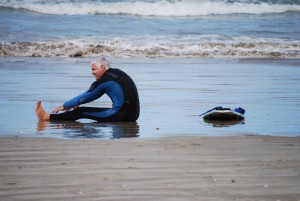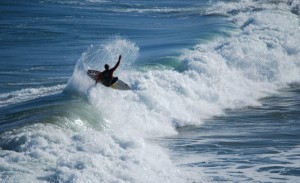
Tendinitis, Tendinopathy, a Heart Attack and a Surprising Fact.
Last week an 84 year old lady walked from Melrose Park to see me at Health Moves Physiotherapy in Edwardstown. She crossed South Road alone. She assured me that she’d crossed at the lights. And I know she did because she was still alive. After seeing me she was walking to Castle Plaza to do her shopping. This was great. Not only because walking is good exercise, but because she was clearly recovering from her Achilles Tendinopathy.
This lady had been doing her exercises regularly, mainly calf raises, to help with her condition. Now here’s the surprising fact. While inflammation is a normal response to tissue damage, for example in a muscle tear where the signs of inflammation can be present for 6 to 12 weeks, it seems with tendon injuries there is rarely any inflammation present. “Hold on,” you say. “But when I did my …………. (fill in the blank with patella, shoulder, elbow,gluteus medius etc. tendon) it was sore to the touch, hurt when stretched, and hurt when I tried to put any load through it.” Most tendinopathies do present like this. But when looked at under the microscope the boffins in the labs tell us that there are changes at a cellular level, and within the substance of the tendon that are responsible for these symptoms, but it’s not an inflammatory response. And rarely do they see any inflammation.
In their article, “Time to abandon the tendonitis myth”, Professors Khan and Cook and colleagues detail how even in acute injuries if there is any inflammation, it’s gone after 2 to 3 weeks. Brukner and Khan, in their well respected Clinical Sports Medicine (Dr Peter Brukner by the way is the Australian cricket team doctor) suggest inflammation may be present, but not after 5 days, based on animal studies. So how can this be, and how can pain last for many months?
Attack of the Tendons
Well, it’s been likened to a cardiac event; a heart attack. Imagine a man, who one minute is blissfully unaware that the high fat diet and “poor lifestyle choices” he has made, have been quietly and painlessly hardening and clogging his arteries. Then he wakes up one morning and has a heart attack. Now there’s pain in his chest. Now he knows he has a problem. This heart attack is the result of a long process. And pain felt at the tendon is also the result of a long process. It doesn’t just happen. The pain marks the beginning of the painful stage in the tendinopathy injury. The process was already underway. Perhaps a stiff joint, an underactive or weak muscle, poor biomechanics, general lack of use and the aging process may all have played a part.
So changes can occur at the tendon without anyone knowing. With no discomfort and no visible signs, at least not to the naked eye. Then one day, maybe while running for a bus, perhaps after doing nothing in particular, bang! Tendon pain. Not an acute injury as such, but one that has been building for some time. Seeing this as an injury acquired over time changes how it is managed. It can also help us to understand why this tendon event can take many months to resolve.
Getting Back
Treatment in the short term to help with the immediate pain and swelling such as ice, compression and elevation can help. Other physiotherapy treatment can include massage, acupuncture, joint mobilization, taping, and core exercises (such as Pilates) if appropriate. Understanding the movement patterns of the patient, the biomechanics and the underlying cause of the problem will help the physiotherapist to guide the longer-term treatment. As will assessing the joints close to the injury site, as well as the muscles that act around the area, and addressing any imbalances. But the most important factor is loading the muscle-tendon unit.
The tendon needs to have the right amount of force transmitted through it to stimulate the healing process without having too much force that could damage it further. Hence the lady from Melrose Park doing her calf raises. To find our physiotherapists at Health Moves Physiotherapy in Edwardstown and Mawson Lakes who are experienced at guiding this rehabilitation click here.
Exercises may start with little or no movement, progress to concentric, eccentric and ballistic exercises prior to full training and return to full sport or activities. While doing this some pain or discomfort is okay. As a guide, pain should be low to moderate and settle quickly.
Tendons respond to load. For your own health and to minimise your chances of developing tendinopathy I recommend working out with weights twice a week. Over 40 and haven’t exercised in a while? You should consult with your GP first. To learn about how much exercise is right, click here.
Andrew Scott
Physiotherapist
HealthMoves Physiotherapy Edwardstown and Mawson Lakes
References
Khan, K M; Cook, J L; Kannus, P; Maffulli, N; Bonar, S F. BMJ: British Medical Journal (International Edition); 16th March, 2002, Vol. 324 Issue 7338, p626. Time to abandon the “tendinitis” myth.
Brukner and Khan: Clinical Sports Medicine, 3rd Edition, 2006.



